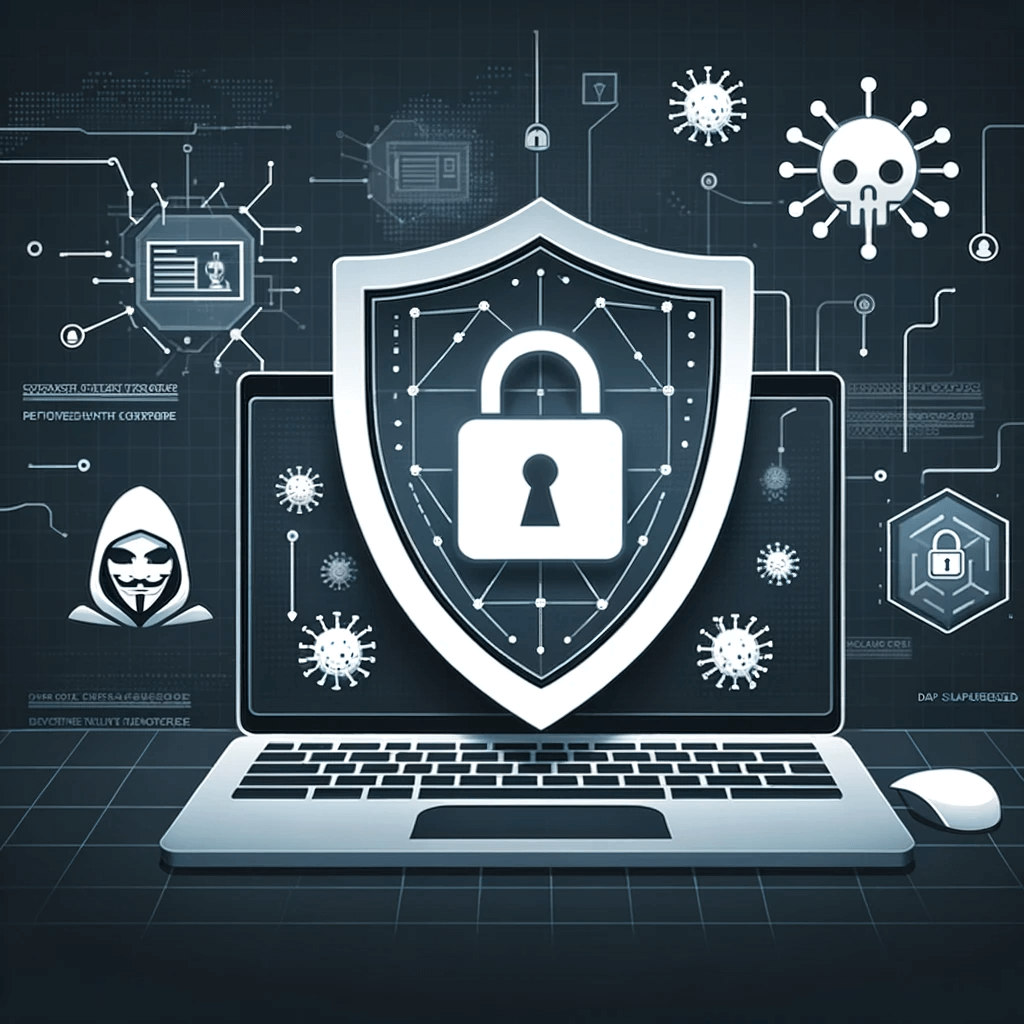Ransomware protection is becoming an essential aspect of modern cybersecurity practices, particularly as ransomware attacks surge in frequency and sophistication. A recent KnowBe4 study highlights the alarming reality that over one-third of organizations faced a ransomware attack in the past year, emphasizing the urgent need for effective strategies to combat this threat. Traditional endpoint protection methods often fall short, leaving organizations vulnerable to these attacks, especially when a significant portion of breaches originates from phishing emails. As cybercriminals continuously refine their tactics, implementing comprehensive training programs focused on cybersecurity tips and phishing email identification becomes crucial. By reinforcing the human firewall within organizations, businesses can fortify their defenses, ultimately reducing the risk and impact of ransomware incidents.
The threat of ransomware is reshaping how businesses approach their digital security frameworks, prompting a shift in focus towards robust protective measures. As malicious software can lock users out of crucial systems and data, safeguarding against such cyber threats is imperative for organizations of all sizes. Understanding the nuances of data protection and incident response is essential, as is recognizing the human aspects of cybersecurity, which plays a critical role in thwarting ransomware incursions. With companies increasingly turning to innovative security solutions and comprehensive training programs to educate employees, the landscape of digital defense is evolving. It is clear that fostering a culture of cybersecurity awareness is paramount in creating resilient organizations capable of withstanding modern cyber challenges.
Understanding Ransomware and Its Impact on Businesses
Ransomware poses a significant threat to organizations by crippling their operational capacity and demanding hefty ransoms for data recovery. According to a recent survey conducted by KnowBe4, 33 percent of businesses reported experiencing a ransomware attack in the past year. The financial and reputational fallout from these breaches can be devastating, resulting in lost productivity, damaged customer trust, and increased costs associated with data recovery efforts. As ransomware continues to evolve, its impact becomes broader, affecting not just individual machines but multiple endpoints and servers within an organization.
One of the most alarming findings from the KnowBe4 study is that over half of the respondents who implemented various cybersecurity measures still faced attacks, highlighting the challenge of relying solely on traditional endpoint protection strategies. The assumption that ransomware targets only a single workstation is misleading; many companies reported an average of six endpoints and two servers compromised during a single attack. This underlines the necessity for a more proactive approach to cybersecurity that involves comprehensive user training and enhanced knowledge of the risks associated with ransomware.
The Role of Employee Training in Ransomware Protection
Effective ransomware protection requires not just technology, but also a well-informed workforce. As pointed out by cybersecurity expert Stu Sjouwerman, the majority of ransomware attacks are initiated through phishing emails. This indicates that employees must be equipped with the skills to recognize and handle potential threats accordingly. By implementing phishing email training programs, organizations can empower their employees to be the frontline defenders against such attacks. Research shows that training employees to identify phishing attempts significantly reduces the risk of ransomware infections.
Organizations that prioritize employee training, like those utilizing KnowBe4’s ransomware simulator, see a marked improvement in their security posture. Despite 72 percent of respondents not recognizing the phishing simulator’s behavior, continual education can bridge this knowledge gap. Investing in comprehensive training can foster a culture of vigilance, making employees aware of common tactics employed by cybercriminals and helping them develop a more critical eye toward suspicious communications. With the understanding that the human firewall is a key piece in the cybersecurity puzzle, companies can create a robust defense against ransomware attacks.
Advanced Endpoint Protection Measures for Cybersecurity
While user training is crucial, organizations should not overlook the importance of advanced endpoint protection systems. The KnowBe4 study indicates that even multiple protective solutions may not suffice against ransomware, suggesting a need for more sophisticated technology integration. Businesses must implement layered security strategies that include next-gen antivirus, intrusion detection systems, and continuous monitoring protocols. Combining these technical solutions with regular updates and patches ensures that endpoints are less vulnerable to cyber threats.
Additionally, organizations should consider integrating threat intelligence and behavioral analysis tools to proactively identify potential ransomware threats. These advanced tools can detect unusual activities and provide insights into emerging cyber threats, improving the overall cybersecurity framework. By adopting a holistic approach that combines technology, user education, and continuous monitoring, companies can significantly enhance their defenses against ransomware and other cyber threats. The goal should always be to create an adaptive security environment that anticipates and responds to ever-evolving ransomware tactics.
The Financial Implications of Ransomware Attacks
The financial ramifications of ransomware attacks can be staggering, not just in terms of ransom payments, but also in operational downtime and recovery efforts. The KnowBe4 study revealed that businesses faced an average of 12 hours of downtime and equivalent IT recovery time after a successful ransomware breach. This can lead to pronounced financial losses as productivity stalls and critical resources are diverted to address the issue. Moreover, organizations that resorted to paying the ransom reported expenditures ranging from three to five bitcoins, translating to thousands of dollars lost in the hope of regaining access to their data.
Beyond immediate costs, the long-term financial impact can be even more significant. Many businesses reported a loss of customer trust following a breach, which is often difficult to quantify but can have lasting effects on profitability. Furthermore, the costs associated with strengthening cybersecurity infrastructure post-attack can strain resources, making it essential for companies to consider investing in comprehensive ransomware protection strategies ahead of time. Developing a proactive plan that addresses both prevention and recovery can mitigate potential financial risks in the face of ever-increasing cyber threats.
The Evolving Landscape of Cybersecurity Threats
The landscape of cybersecurity threats is constantly changing, primarily due to the increasing sophistication of cybercriminals. Ransomware attacks are evolving to become more targeted and cryptic, making them harder to detect and thwart with traditional methods. The KnowBe4 study indicates that a staggering percentage of organizations faced ransomware threats even with endpoint protection in place, underscoring the need to stay informed of the latest trends in cybercrime. As technology progresses, so too must the strategies employed to combat these threats.
Cybersecurity measures need to incorporate adaptive technologies such as AI-driven security systems and advanced machine learning algorithms that can predict and counteract potential breaches. Organizations must remain vigilant and committed to evolving their protective measures to keep pace with the ever-changing tactics used by cybercriminals. Staying proactive in cybersecurity not only protects against current threats but also prepares organizations for emerging risks in the future. By adopting a forward-thinking approach, businesses can fortify their defenses against the evolving landscape of ransomware and other cyber threats.
Building a Comprehensive Cybersecurity Framework
Creating a robust cybersecurity framework is essential for minimizing the risks associated with ransomware and other cyber threats. This involves a multi-faceted approach that includes implementing strong policies, utilizing cutting-edge technologies, and conducting regular training sessions for employees. A comprehensive framework should start with a risk assessment to identify vulnerabilities, followed by the deployment of protective tools tailored to the organization’s specific needs. Regular reviews and updates of the cybersecurity framework are vital to ensure that it remains effective against new and emerging threats.
Moreover, an effective cybersecurity framework goes beyond just technology and policies. It should also foster a culture of security awareness among employees. Engaging staff at all levels in the cybersecurity dialogue, conducting simulated phishing exercises, and sharing the latest cybersecurity news can enhance their awareness and response capabilities. When employees feel empowered and knowledgeable about security practices, they can significantly contribute to the organization’s overall defense against ransomware attacks and other cyber threats.
Real-World Consequences of Ransomware Breaches
The real-world consequences of ransomware breaches can extend far beyond immediate financial losses. Businesses impacted may find themselves facing legal repercussions, reputational damage, and a loss of customer confidence. For example, organizations that fail to adequately protect sensitive data may be subject to regulatory fines and lawsuits if customer information is compromised. This ongoing fallout can lead to substantial long-term costs, complicating recovery efforts and delaying organizational growth.
In addition to these external pressures, companies often experience internal repercussions from the disruption caused by a ransomware attack. Employees must divert their focus to crisis management, and productivity can plummet during recovery efforts. Furthermore, organizations may find themselves in a reactive mode, scrambling to reinforce their defenses only after an attack has occurred. Implementing a proactive security stance that includes ransomware protection measures, employee training, and regular system evaluations can greatly reduce the impact of these breaches, fostering an environment of resilience rather than reaction.
The Importance of Regular Security Assessments
Regular security assessments are critical in maintaining a strong defense against ransomware and other cyber threats. By routinely evaluating security protocols and technologies, organizations can identify weaknesses and update their defenses accordingly. The KnowBe4 survey highlighted that many companies employing various security measures still fell victim to ransomware, underlining the need for continual reassessment of one’s cybersecurity posture. Performing these assessments not only uncovers vulnerabilities but also helps organizations stay informed about the latest security trends and attack vectors.
Beyond identifying vulnerabilities, conducting regular security assessments establishes a foundation for steady improvement in an organization’s cybersecurity defenses. These assessments often highlight where employee training may be lacking, allowing organizations to address knowledge gaps before they can be exploited by cybercriminals. By fostering a culture of continuous improvement and proactive vigilance, organizations can strengthen their resistance to ransomware attacks and further enhance their overall cybersecurity framework.
Future Trends in Ransomware and Cybersecurity
As the threat landscape evolves, so too do the tactics employed by cybercriminals. Future trends in ransomware may include more sophisticated delivery methods and deeper integration into existing malicious software ecosystems. Organizations must stay ahead of these trends and recognize that reactive measures may not suffice. Former reliance on traditional endpoint protection without user awareness training is increasingly inadequate against today’s ransomware threats. Comprehensive defenses that blend technology with human vigilance would likely be a hallmark of future security strategies.
Continuously scanning the horizon for emerging threats and potential vulnerabilities can help guide the development of innovative security measures. Organizations should adopt a forward-thinking approach, leveraging insights gained from past ransomware incidents to shape future defenses. By prioritizing adaptive, resilient cybersecurity practices, businesses can prepare for the dynamic nature of cybersecurity threats in order to protect their assets and maintain operational integrity more effectively.
Frequently Asked Questions
What are effective tips for ransomware protection in my organization?
To enhance ransomware protection, organizations should implement a multi-layered cybersecurity strategy that includes regular software updates, user training on detecting phishing emails, effective endpoint protection, and data backups. Educating employees through cybersecurity tips and simulations, like those offered by KnowBe4, is crucial to prevent ransomware attacks.
How does endpoint protection relate to ransomware protection?
Endpoint protection is essential for ransomware protection as it helps defend devices against malicious attacks. However, recent studies reveal that relying solely on endpoint security is insufficient. Organizations must combine endpoint protection with user training to effectively mitigate the risks of ransomware attacks, especially since many attacks are initiated through phishing emails.
What is the significance of phishing email training for ransomware protection?
Phishing email training is a critical component of ransomware protection. Since ransomware is commonly delivered through phishing emails, training employees to recognize and avoid such threats can significantly reduce the likelihood of successful attacks. Tools like KnowBe4’s training programs enhance awareness and create a robust human firewall against ransomware.
Are ransomware attacks still a growing concern for businesses?
Yes, ransomware attacks continue to pose a significant threat to businesses. According to a KnowBe4 study, 33 percent of organizations reported experiencing a ransomware attack in the last year. This underscores the need for comprehensive ransomware protection strategies that combine technology with employee training and awareness.
What impact do ransomware attacks have on organizations?
Ransomware attacks can have severe repercussions, often affecting multiple endpoints and servers. On average, organizations faced around 12 hours of user downtime and an equal amount of IT resources to remediate the issue. This highlights the need for effective ransomware protection strategies to minimize both the operational and financial impacts.
How can my organization improve its ransomware protection posture?
To improve ransomware protection, organizations should implement a combination of robust cybersecurity policies, regular security training for employees, and a comprehensive backup and recovery plan. Understanding that endpoint protection alone may not be enough, companies should focus on building a strong human firewall through phishing email training and utilizing tools like ransomware simulators to test employee readiness.
What should organizations do if they experience a ransomware attack?
In the event of a ransomware attack, organizations should prioritize incident response by isolating affected systems, conducting a thorough damage assessment, and reporting the incident to relevant authorities. It is critical to have a recovery plan in place, including data backups, to restore operations without paying the ransom, which is not recommended, according to industry practices.
| Key Points | |
|---|---|
| Ransomware as a Cybercrime Business Model | Ransomware remains the most lucrative form of cybercrime, putting organizations at risk. |
| Survey Insights | 33% of organizations experienced a ransomware attack in the past year. |
| Multi-Solution Effectiveness | 53% of organizations using multiple ransomware solutions still fell victim to attacks. |
| Detection Challenges | 48% of respondents using antivirus could not detect KnowBe4’s ransomware simulator. |
| Phishing as the Primary Delivery Method | Ransomware is typically delivered via phishing emails, making user training essential. |
| Impact of Ransomware Attacks | On average, 6 endpoints and 2 servers are affected per attack, leading to significant downtime. |
| Ransom Payment Statistics | 94% of businesses did not pay the ransom; those who did paid between 3-5 bitcoins. |
| Conclusion | Organizations must enhance their ransomware protection strategies, emphasizing user training and awareness as critical defenses. |
Summary
Ransomware protection is essential for businesses today, as ransomware remains a prevalent threat. In light of recent studies, it’s clear that many existing endpoint protection methods are inadequate. Organizations must focus on not only technological defenses but also on training employees to recognize phishing attacks, which are the most common delivery method for ransomware. By fostering awareness through training, companies can establish a robust human firewall that significantly enhances their overall security posture. A proactive approach to ransomware prevention, involving both technology and user education, is key to mitigating risks associated with this devastating form of cybercrime.




